Fall 2023 Senior Design Projects
 Senior Design provides PNW engineering students with supervised experience in the process and practice of engineering design.
Senior Design provides PNW engineering students with supervised experience in the process and practice of engineering design.
Students working in teams pursue an idea from conception to realistic design. The course concludes with the presentation of a substantial written report and a formal oral presentation.
Take a look at the teams and projects for the Fall 2023 semester:
State of The Art Study and Develop Recommendation to Address Fire Resistance of FRP
Steven Dobric and Seth Lyons
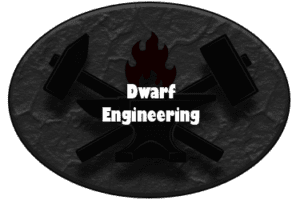
- Team Name: Dwarf Engineering
- Team Slogan: “You need quality, get the dwarves”
- Did this project receive funding? No
- Project Advisor: Akram Jawdhari
Team Members

Steven Dobric

Seth Lyons
Abstract
Dwarf Engineering, where if “you need quality, get the dwarves” is working on a state-of-the-art report on the fire resistance capabilities of fiber-reinforced polymers, FRP for short. The purpose of this project is to have a finalized professional report ready for publishing and ready for viewing by professional engineers.
So far, we’ve completed reference gathering, data gathering, data compilation and filtration. We strive to complete an outline, rough draft, peer review and the final draft. We are currently on track to complete this report and make it as professional as possible, since the plan is to have the rough draft completed or close to completion by the end of the summer.
As long as we stick to the recommendations our advisors have given us, and that we’ve given ourselves, the project will be completed smoothly.
Developing a Construction Project Management Process
Will Jennings, Mackenzie Reusze and Razan Alsalem
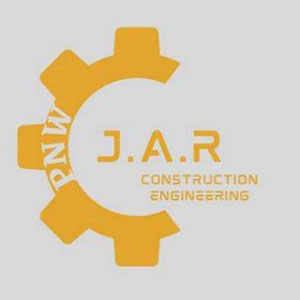
- Team Name: JAR Construction Engineering
- Team Slogan: “Scoping the Future for Engineering”
- Did this project receive funding? No
- Project Advisor: Wubeshet Woldemariam
Team Members

Will Jennings

Mackenzie Reusze

Razan Alsalem
Abstract
The construction industry is a vital sector in the United States, with over half of all civil engineers working in this field. Effective construction project management is crucial to the success of infrastructure projects, as it involves multiple complex factors, including human behavior.
This project aims to develop a comprehensive construction management process, covering various aspects such as contractual agreements, organizational charts, scheduling, tracking techniques, and estimating procedures. The approach includes detailed research and case studies of large infrastructure projects to identify real-world problems and develop effective solutions. Both case studies selected for this research are the Illinois Department of Transportation projects, allowing for the highest degree of project quality to be studied. Critical path method schedules will be created in Microsoft Project to analyze and quantify the results.
The project’s outcome is to improve construction management processes, highlight their benefits through cost analysis, and gain valuable experience in this essential field. The research outcomes will offer new industry knowledge to students that is currently unavailable at the classroom level.
Leveraging the Design of Noise Barriers to Mitigate Air & Noise Pollution
Cameron Dunlap and Abanoub Rezkallah
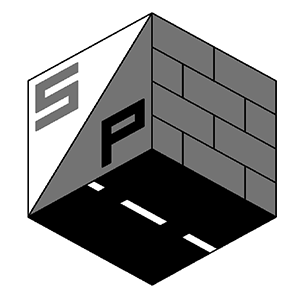
- Team Name: Soundproof
- Team Slogan: “Keep Unclean Contained”
- Did this project receive funding? No
- Project Advisor: Xiuling Wang & Wubeshet Woldemariam
Team Members

Abanoub Rezkallah

Cameron Dunlap
Abstract
This project addresses the longstanding issue of air quality along high-traffic interstates, and how noise barriers may be used to mitigate the effects of air pollution. Noise barriers have traditionally been employed to mitigate noise disturbances in densely populated areas, typically positioned close to sensitive noise zones.
However, in this endeavor, we propose a novel approach: the development of noise barriers that not only reduce noise levels but also actively mitigate air pollution. The TNM Software and Ansys FLUENT are employed to optimize existing barrier designs to find the optimal case for barriers employed for this purpose.
Design and Implementation of Multilevel Inverters for Electric Vehicles Applications
Kimani Jackson, Collin Kinley and Sergio Valdez

- Team Slogan: “Make Every Switch Count!”
- Did this project receive funding? Yes
- Project Advisor: Arkan Kadum
Team Members

Kimani Jackson

Colin Kinsley

Serjio Valdez
Abstract
Using Multisim, Arduino, and breadboards, the authors of this study present the design and implementation of a multilayer inverter (MLI). The MLI is a piece of power electronics equipment that combines a number of lesser voltage levels in order to generate a higher-quality voltage waveform. The proposed MLI is made up of H-bridge modules that are cascaded, and the output voltage can be adjusted by manipulating the switching states of each module individually.
In this work, we discuss the design of the MLI that was created using Multisim, as well as the implementation of the control algorithm that was created using Arduino. Modeling and simulation of the components that make up the MLI are carried out in Multisim. These components include the DC voltage supply, H-bridge modules, gate driver circuits, and power switches. Arduino is used as the platform for the implementation of the control algorithm, which is derived from a technology known as space vector pulse width modulation (SVPWM). The control technique that has been developed ensures that the voltages on the DC-link capacitors are balanced, and it reduces the amount of total harmonic distortion (THD) in the waveform of the output voltage.
The breadboard-based hardware implementation of the MLI is likewise presented in the aforementioned publication. Breadboards are put to use in the process of mounting the MLI’s many different components and connecting them to Arduino. The results of the experiments demonstrate that the suggested MLI is capable of effectively generating output voltage of a high quality with a low THD. The MLI is subjected to a variety of different operating situations during the testing process, and its performance is assessed based on a number of distinct performance indicators, including THD, efficiency, and switching losses.
Design of Heat Transfer in a Gas-Stirred Ladle Furnace
Edinenido James and Derrick Dudley

- Team Name: Neon Black
- Team Slogan: “The Black that Glows”
- Did this project receive funding? No
- Project Advisor: Chenn Zhou & Tyamo Okasun
Team Members

Edinenido James

Derrick Dudley
Design of Plasma Torch Hot Blast Heating for the Ironmaking Blast Furnace
Thomas Stobbe and Adam Duesing
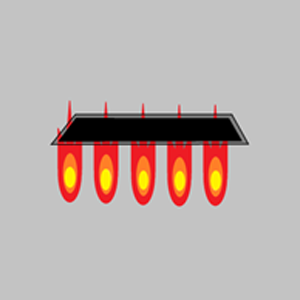
- Team Name: Team HBE (Hot Blast Engineers)
- Team Slogan: “Refining our past for a better future”
- Did this project receive funding? No
- Project Advisor: Chenn Zhou & Tyamo Okasun
Team Members

Thomas Stobbe

Adam Duesing
Abstract
As the world continues to progress towards reducing carbon emissions to net zero, steel-making industries have made significant changes to processes to reduce their carbon footprint. More specifically, integrated steel-making facilities can produce several million tons of steel per year meaning the blast furnaces are required to consume a very large amount of coke (high carbon fuel), therefore producing a large amount of CO2 emissions.
Heat generation from coke can be minimized to a state where only the chemical minimum of CO for reducing iron oxides is required. Alternative sources for heating of furnace hot blast temperatures may be considered in the form of plasma torch technology.
Electrification can provide sensible heat into the blast furnace system to reduce carbon emissions directly from the process as well as indirectly from the consumption of green electricity rather than carbon-based fuel electricity.
Baja SAE Drivetrain and Suspension
Morgan Ceh, Pete Cowling, Azrael Jimenez and Zack Richards

- Team Slogan: “Providing people the freedom to accelerate off the beaten path.”
- Did this project receive funding? Funding was received in the Spring ’23 semester but none in Fall ’23.
- Project Advisor: Aref Yadollahi
Team Members

Morgan Ceh

Pete Cowling
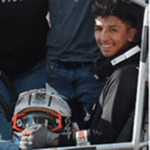
Azrael Jimenez

Zack Richards
Abstract
Baja SAE® is an intercollegiate engineering design competition for undergraduate and graduate engineering students. The object of the competition is to simulate real-world engineering design projects and their related challenges. Each team’s goal is to design and build a single-seat, all-terrain, sporting vehicle whose driver is contained within the structure of the vehicle.
The vehicle is to be a prototype for a reliable, maintainable, ergonomic, and economic production vehicle which serves a recreational user market, sized at approximately 4,000 units per year. The vehicle should aspire to market-leading performance in terms of speed, handling, ride, and ruggedness over rough terrain and off-road conditions.
Performance will be measured by success in the static and dynamic events which are described in the Baja SAE® Rules and are subject to event-site weather and course conditions. We will be focusing on the design and manufacturing of a robust 4WD drivetrain system with integrated rear suspension.
Use of Additive Manufacturing Techniques and Microcontrollers to Create Simulation Hardware Controls
Brian Butler, Andrew Viater and Josue Gutierrez

- Team Name: JBA Simulation Technology
- Team Slogan: “Elevate Your Simulation Experience”
- Did this project receive funding? Funding was received for the Spring ’23 semester and was able to be used during the Fall ’23 semester.
- Project Advisor: Chenn Zhou, Aref Yadollahi and Kyle Toth
Team Members

Brian Butler

Andrew Viater

Josue Gutierrez
Abstract
While simulation controllers have seen widespread use in flight and racing simulations, their adoption in industrial applications has been limited. This project aims to develop an economical, easily maintainable, and modular crane simulator by leveraging additive manufacturing and microcontrollers to create a lifelike control interface for an actual crane cab.
We anticipate delivering a fully operational simulation system by December 2023, featuring authentic controls and a realistic virtual environment.
FSAE Powertrain Design
Zander Zafiro and Erik Thompson
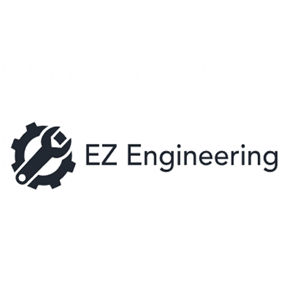
- Team Name: EZ Engineering
- Team Slogan: “Building the Future”
- Did this project receive funding? No
- Project Advisor: Masoud Mojtahed
Team Members

Erik Thompson

Zander Zafiro
Abstract
The objective of this project is to redesign the differential mounts of the Formula SAE club and to also redesign the rear sprocket on the rear driveline.
The purpose of the rear differential mounts is to encompass the differential bearings and connect the differential to the engine adapters. These mounts connect to the engine’s mounting points and help maintain a rigid shape within the rear driveline. This will help the car’s rear wheels from moving the differential under loading.
The goal of the sprocket is to efficiently transmit power from the engine to the rear driveline using a driving sprocket on the engine and a chain connecting the driving and driven sprockets. The sprocket will be designed around weight reduction and increasing the lifecycle of the sprocket.
For the differential mounts, the group settled on an eccentric disk design which doesn’t need a chain tensioner and will still allow for easy adjustment of the chain by moving the location of four bolts.
Building a Solar-Powered Electric Vehicle
Paola Castaneda, Bryan Lopez and Zachary Satterfield

- Team Name: Ecocircuit
- Team Slogan: “Powering the Future, Electrifying the Drive”
- Did this project receive funding? Yes
- Project Advisor: Hansung Kim, David Kozel and Aref Yadollahi
Team Members

Bryan Lopez

Paola Castaneda

Zachary Satterfield
Abstract
Our goal in this project was to create a working drivetrain for an electric vehicle that is as efficient as possible. This was done to compete in the Shell Eco-marathon. We are collaborating with ASME and their vehicle design. Calculations were done on the mechanical system so that a motor could be sized for the vehicle.
A PI controller has been designed for the purposes of controlling the speed of the vehicle using an H-bridge circuit. This controller has been designed using MOSFETs, gate drivers, a current sensor, and a speed sensor. A model of the motor and controller was created using Simulink so that the size of the MOSFETs could be determined.
Pulse width modulation software and an analog to digital converter program was researched and developed, which will be used to switch the H-bridge.
Design and Build a Stacked Vertical Axis Wind Turbine
Erick Macias Perez, Javier Magdaleno, Adam Lorenz and Daniel Olanda
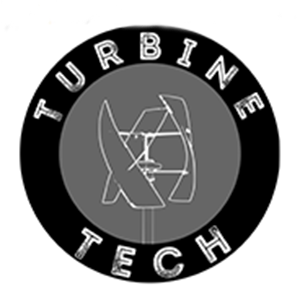
- Team Name: Turbine Tech
- Team Slogan: “Designs that will blow them away.”
- Did this project receive funding? This project received funding in Spring ’23 and also used residual funding from the previous year.
- Project Advisor: Yun Liu
Team Members

Javier Magdaleno

Adam Lorenz

Erick Macias

Daniel Olanda
Abstract
In order to compare to horizontal axis wind turbines (HAWTs), multiple vertical axis
wind turbines (VAWTs) must be stacked. In doing so, the VAWTs interact with each other and form what’s called a wake. With this wake, the turbines are able to essentially shove one another and allow for more power and efficiency to be achieved.
The following report describes the engineering process that went into the stacking of vertical
axis wind turbines, and the testing of the system. Said stacked turbines are made with modularity in mind so that the consumer can select the amount of power required for their application. Therefore, both the mechanical assembly and electrical system can be easily connected together in order to achieve this goal of modularity.
From preliminary testing of miniature scale turbines, the project’s concept is feasible. However, developing a stable structure that includes the necessary modifications, and an electrical system to test and utilize the system’s power capacity is an ongoing challenge.